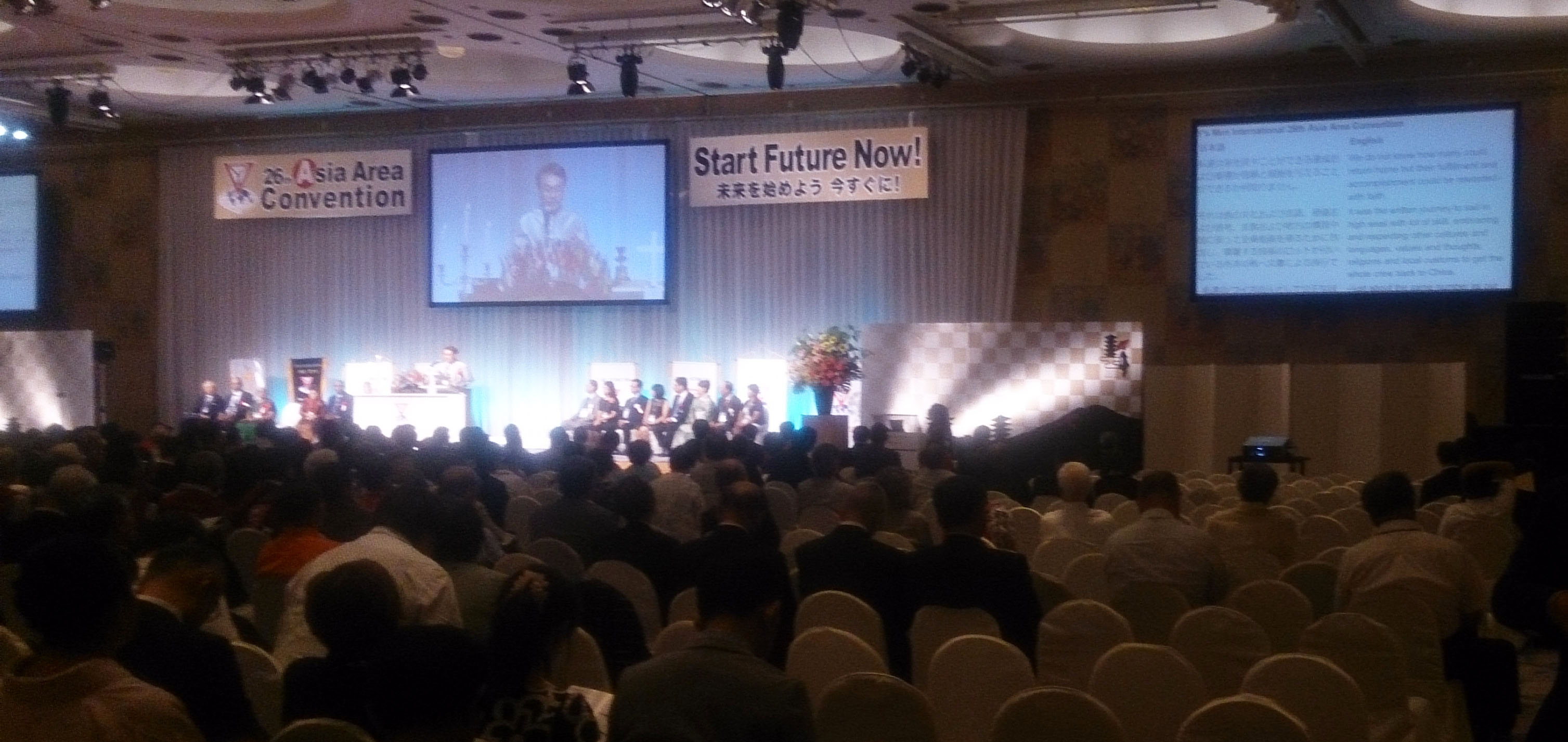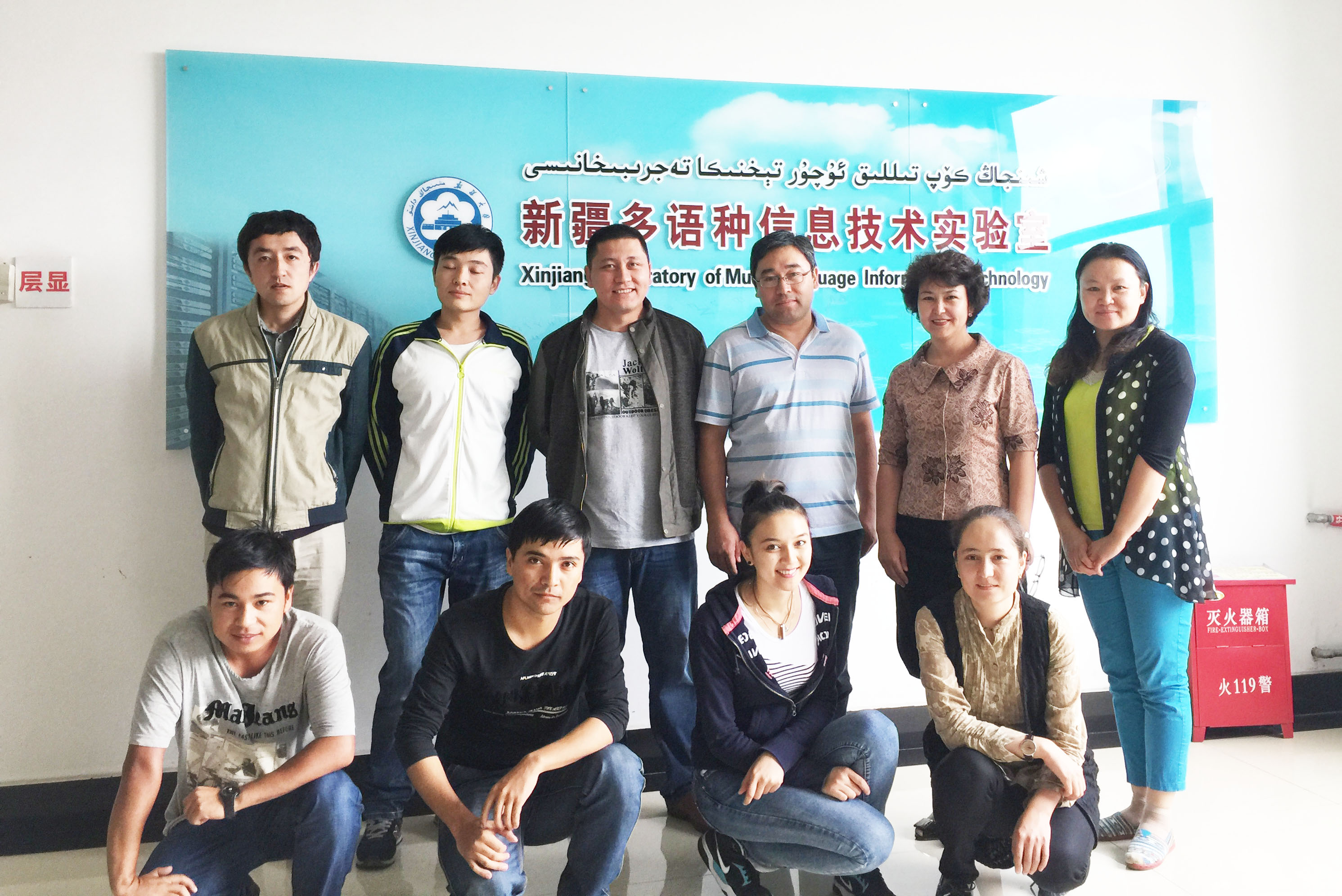Contents
[The Language Grid Technical Letter(serialization): (2nd edition) Easy to develop services]
![]()
[New Language Services and Resources]
![]()
[A Trial to add multilingual support at an international conference]
![]()
[Worldwide youths collaboration with the Language Grid (KISSY 2015 report)]
![]()
[Best Paper Award of SCC 2015]
![]()
[Language Grid User Introduction(the 34th):Language Grid Urumqi operation center]
![]()
[Periodic Maintenance: October 13, 2015, November 10, 2015 and December 8, 2015]
![]()
The Language Grid Technical Letter (2nd edition): Easy to develop services
In the first series, we showed the service invocation by using simple script and explained that the libraries needed to execute are automatically downloaded. Actually, the libraries are placed in the site called the “Central Repository”. The Central Repository is the site that hosts Java libraries and currently a million open source libraries are hosted there. Most of the libraries of the service grid server software (which the language grid based) are also hosted there.
We will now introduce the code that runs simple service, which adds 2 to parameter value and returns it.
-
-- helloService.groovy --
1 @Grab('org.eclipse.jetty:jetty-webapp:9.2.12.v20150709')
2 @Grab('net.servicegrid:jp.go.nict.langrid.servicecontainer:1.0.6')
3 import jp.go.nict.langrid.servicecontainer.handler.annotation.Service;
4 import jp.go.nict.langrid.servicecontainer.handler.jsonrpc.servlet.JsonRpcServlet;
5 import org.eclipse.jetty.server.Server;
6 import org.eclipse.jetty.webapp.WebAppContext;
7
8 public interface TestService{
9 int f(int n);
10 }
11 public class TestServiceImpl implements TestService{
12 public int f(int n){ return n + 2;}
13 }
14 @Service(name="TestService", impl=TestServiceImpl.class, intf=TestService.class)
15 public class Servlet extends JsonRpcServlet{}
16
17 WebAppContext webapp = new WebAppContext("./", "/app");
18 webapp.addServlet(Servlet.class, "/services/*");
19 Server server = new Server(8080);
20 server.setHandler(webapp);
21 server.start();
22 server.join();
----
We use Jetty as web application server. At lines 8 to 10, we define the interface of service. At lines 11 to 13, we write the implementation of the service, which implements interface defined above. At lines 14 and 15, we define the Servlet to provide the service through JSON-RPC. If you want to provide through SOAP, use jp.go.nict.langrid.servicecontainer.handler.axis.servlet.SGAxisServlet instead. At last, in lines 17 to 22, we run Jetty. To run this, please setup Java and Groovy as in the previous series, and run the following command.
-
${groovy_home}/bin/groovy helloService.groovy
Let’s test this service. Please run following line.
-
curl "http://127.0.0.1:8080/app/services/TestService" -s -d '{"method":"f","params":[3],"id":1}
The JSON string followed by “-d” is the actual request that send to service. It means that method name is “f” and parameter is 3. If following lines are displayed after execution, it has succeeded.
-
{"error":null,"headers":[],"id":"1","result":5}
The request is executed by the service and as a result, 5 is returned.
Codes are slight longer than previous series; it is still surprising that about 20 lines can create the service, isn’t it? We will continue to introduce technical topics in next series.
New Language Services and Resources
3 new language dictionaries have been added to the Language Grid.
(Service Names / Provider / Copyright / Supported Languages)
【Bilingual Dictionary】
- Machine-Generated Dictionary for Kazakh-Kyrgyzx/ Ishida and Matsubara Laboratory, Department of Social Informatics, Graduate School of Informatics, Kyoto University / Mairidan Wushouer / Kazakh Kyrgyz
- Machine-Generated Dictionary for Uyghur-Kazakh/ Ishida and Matsubara Laboratory, Department of Social Informatics, Graduate School of Informatics, Kyoto University / Mairidan Wushouer / Uyghur Kazakh
- Machine-Generated Dictionary for Uyghur-Kyrgyz/ Ishida and Matsubara Laboratory, Department of Social Informatics, Graduate School of Informatics, Kyoto University / Mairidan Wushouer / Uyghur Kyrgyz
A Trial to add multilingual support to an international conference
- Assisting with the multilingualization of Y's Men International 26th Asia Area Convention using the Language Grid -

At the Y's Men International 26th Asia Area Convention held in 7/31/2015 – 8/2/2015, we provided multilingual support with the application of the Language Grid. Y’s Men International is the service organization that founded by Judge Paul William Alexander in Toledo, Ohio, USA in 1922 to support the YMCA. The total number of participants at this convention is 900 from 6 areas (Japan East, Japan West, Philippines, South East Asia, Sri Lanka and Taiwan).
Y's Men International 26th Asia Area and Ishida & Matsubara Laboratory have worked for preparation from last December by creating a dictionary, translating and revising script, improving Language Grid Toolbox and developing specialized system. In the actual conference, we did two types of multilingual support for participants through the developed system. One is the displaying scripts translated beforehand and the other is real-time translation and display. With the real-time translation and display, two people input the speech, summarizing text suitable for input for machine translation, and the system translated it using Language Grid Toolbox and displayed it to screen.
Through the conference, 1600 lines of texts were translated and provided to participants.
Worldwide youths collaboration with the Language Grid (KISSY 2015 report)
NPO Pangaea held the 2nd Kyoto Intercultural Summer School for Youths (KISSY2015) with co-sponsorship by Ishida and Matsubara Laboratory (Kyoto University) and Global Girls Rising (California, USA) during July 31st to August 7th 2015 at The Clock Tower Centennial Hall, Kyoto University. In this event, youths around the world cooperate each other and create handicraft works by using ICT technology with the aim of getting over the difference of language or culture and collaborating with each other. The main activity of this event is to hold a youths’ workshop where the youths from five countries (Kenya, Cambodia, USA, Korea, and Japan) work together during eight days and seven nights.
This event employs the multilingual system that consists of chat and BBS using the Language Grid. The workshop is conducted during August 1st to 4th. The theme of this year is “We love ~~~~”. Youths create a handicraft work that indicates what they love in each group of seven youths for the first three days. Then, each group makes a presentation about their artwork on the last day.


whose language and culture are different
Best Paper Award of SCC 2015
The research on parallel execution of composite language services including Google Translate, Microsoft Bing and so on, received the “Best Paper Award” in the 12th IEEE International Conference on Services Computing (SCC 2015), the top conference on Services Computing.
-
Paper Information:
Mai Xuan Trang, Yohei Murakami, Toru Ishida (Kyoto University),
Policy-Aware Optimization of Parallel Execution of Composite Services
※When you receive an award related to the Language Grid, please inform it to the Language Grid Newsletter Editorial Committee (newsletter-contact[@]langrid.org). We will place the article in the next issue.
Language Grid User Introduction(the 34th):Language Grid Urumqi operation

The Xinjiang University (short as XJU) located in the city of Urumqi – the capital city of Xinjiang Uyghur Autonomous Region in the far west China – was established in 1924. Uyghur (refers to Uyghur language), the official language of autonomous region, is one of the major members of Turkish language family of Altaic Language system. It has been widely used by Uyghur people with more than 10 million speakers [1]. Any research result on Uyghur language processing has been beneficial for other similar local languages such as Kazak and Kirgiz due to significant similarity in linguistic characteristics. There is a potential room for achieving automatic way of pairwise mapping language resources of these local languages as well as other Turkic languages which have up to 200 million speakers [2] in Central Asia including Turkey. Such bilingual resources would be very useful for creating machine translation systems for the extra-family language pairs, for which there are no sufficient language resources and funding available.

It is prompted us to establish a new operational center of Language Grid in Xinjiang University because the main purpose of Language grid project is fit our research intention. After consulting with Kyoto University, we have established the new operation node and is working now. As to now, we have wrapped certain amount of language resources as the initial language services at our node:
- 200,000 Uyghur-Chinese parallel sentence.
- 50,000 Kazak-Chinese parallel sentence.
- 50,000 Kirgiz-Chinese parallel sentence.
- One million word-level monolingual corpus (Uyghur).
- Uyghur-Chinese Machine Translator.
- Uyghur-Chinese-English bidirectional dictionary.
- Uyghur Morphological Analyzer.
Federation among the Language grid Operation Centers encourages us to plan using language services provided by Kyoto and other operation centers to build new language resources where the Chinese can be bridge language.
Our geological advantage (bordering with many counties, such as Russia, Mongolia, Kazakhstan, Kirgizstan, Tajikistan, Afghanistan and Pakistan) as well as linguistic advantage (most people living neighboring in central Asia use Turkic languages, such as Turkish, Uzbek, Kazakh, Kyrgyz, Turkmen etc.) all together would bring us many potential collaborators in the near future.
Periodic Maintenance
Periodic maintenance will be carried out as below. If you wish to use the Language Grid during this period, please contact us in advance at operation [at] langrid.org.
-
‐October 13rd, Tuesday/ from 16:00 to 20:00(JST)
‐November 10th, Tuesday/ from 16:00 to 20:00(JST)
‐December 8th, Tuesday/ from 16:00 to 20:00(JST)
Periodic maintenance will be carried out on the second Tuesday of every month from 16:00 to 20:00 (JST).
Please refer to the Language Grid portal sites at: http://langrid.org/en/.
